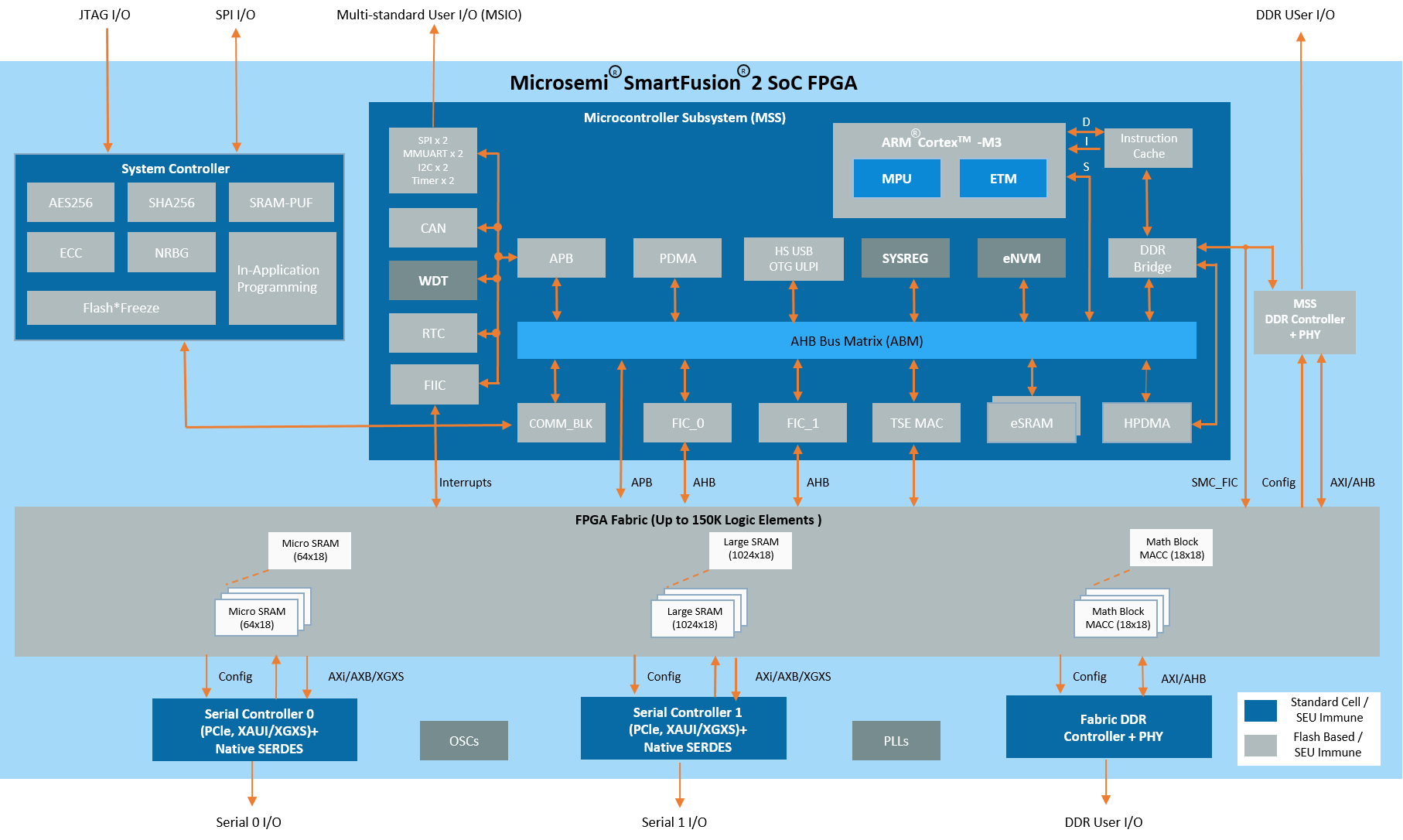CASE STUDY SNAPSHOT
Customer : An Indian Defence Lab working with embedded computing systemsSize : > 200-1000
Project vertical : Defence
Challenge : Develop a custom XMC card with rich processing capabilities and security features.
Solution : Design and develop an uCLinux powered Microsemi SmartFusion2 SoC FPGA XMC System
Services & Products Availed : Product engineering services, Hardware Design, BSP Development
Tools and Technologies :
- Key Hardware: SmartFusion2 SoC
- Software Development: C
- Frameworks: Linux
- Peripherals: Ethernet, UART, I2C, SPI etc
INTRODUCTION
An esteemed Indian defence research laboratory, known for its high-security embedded systems, was in need of a robust and secure processing platform for a data-critical application. Their internal team required an embedded solution that would meet stringent reliability, boot-time, and data protection requirements while operating within the constraints of a compact XMC form factor.
CHALLENGE
The key challenge was to design a secure, real-time processing platform leveraging SoC FPGA technology that could run a full-featured embedded OS on a resource-constrained ARM Cortex-M3 core. With demanding requirements such as secure boot, cryptographic capabilities, fast boot-up, and industrial-grade reliability, the lab also required a complete hardware, FPGA, and software stack development for a Microsemi SmartFusion2 SoC-based custom board — a task beyond typical commercial off-the-shelf offerings.
SOLUTION
Embien Technologies took ownership of the project as a one-stop embedded engineering partner. Our multidisciplinary team designed and developed a secure and compact XMC form factor board around the Microsemi SmartFusion2 SoC FPGA platform, meeting all the defence lab’s stringent requirements.
Strategic Component Selection
After thoroughly evaluating several SoC FPGA offerings, Embien selected the Microsemi (now Microchip) SmartFusion2 M2S060 SoC for its robust security architecture, extensive hard IP blocks, and proven reliability in mission-critical applications. With 150K logic elements and integrated peripherals such as Ethernet, UART, I2C, SPI, timers, and USB, the SoC also offered hardware security features like AES256, SHA256, RNG, and secure boot support — ideal for the lab’s requirements.
Compact, Secure Hardware Design
Embien created a high-density secure embedded system based on the XMC form factor, integrating necessary memory (DDR, Flash, EEPROM), IO interfaces, and power supplies. Where peripheral interfaces were unavailable within the SoC, our team supplemented the design using:
- External interfaces (e.g., LCD controller, flash memories)
- FPGA programmable logic IP blocks
Key security features were implemented, including secure boot mechanisms using SmartFusion2’s built-in cryptographic engines to prevent tampering and unauthorized firmware access. The high level FPGA block diagram is captured here.

uCLinux Porting for ARM Cortex-M3
One of the most innovative aspects of this project was the porting of uCLinux, a variant of Linux for MMU-less processors, onto the SmartFusion2 platform powered by the ARM Cortex-M3 core. Since traditional Linux requires a Memory Management Unit (MMU), it cannot run on the Cortex-M3 natively.
To bridge this limitation, Embien ported uCLinux in XIP (Execute in Place) mode, enabling execution directly from flash memory. With careful management of the Memory Protection Unit (MPU), we were able to:
- Leverage memory protection features
- Enable multi-threading and user/kernel space separation
- Implement custom device drivers
We developed or ported all necessary non-standard drivers — for custom FPGA logic, external EEPROMs, communication interfaces, and more.
System Software Development
Embien engineered the complete Board Support Package (BSP) for the platform, including:
- Bootloader configurations
- Kernel customization
- Filesystem setup
- Custom device drivers
- Hardware abstraction layers
Further, a robust application library layer was built, exposing APIs for use by higher-level application modules developed by the customer. This ensured modularity, maintainability, and efficient co-development between Embien and the lab’s internal team.
Optimized Boot-Time and Real-Time Responsiveness
In mission-critical defence applications, system responsiveness is paramount. Embien fine-tuned the entire software stack to reduce boot time dramatically and ensured minimal latency for critical data acquisition and processing paths.
Testing and Validation
Extensive unit, integration, and system-level tests were performed:
- Real-time data acquisition through high-speed serial interfaces
- Cryptographic operation validation via built-in AES/SHA/RNG engines
- Regression and stability testing across environmental and operational boundaries
- Validation of secure boot and firmware integrity
Design Transfer and On-Site Training
After successful validation, a complete design transfer was carried out. Deliverables included:
- Full hardware schematics and PCB design files
- FPGA bitstream and logic design source code
- BSP source code and compiled binaries
- Detailed documentation for maintenance and enhancement
Embien conducted comprehensive on-site training sessions to ensure seamless knowledge transfer and enable independent operation, maintenance, and future enhancements by the customer.
BENEFITS
- Faster Time-to-Market:Rapid development of a secure, full-featured SoC-based embedded platform.
- Reduced Risk:Proven expertise in uCLinux porting and SmartFusion2 design ensured first-time-right execution.
- High Security:Full support for secure boot, cryptographic hardware, and data protection.
- Cost-Efficiency:Single-vendor execution reduced coordination overhead and total cost of ownership.
- Long-Term Support:Embien’s extensive documentation and training enabled smooth internal adoption.
CONCLUSION
Embien Technologies helped this leading Indian defence R&D lab realize a secure, compact, and Linux-capable embedded system using the Microsemi SmartFusion2 SoC — all within a constrained form factor and aggressive timelines. Our integrated services — from hardware and FPGA design to OS porting and driver development — enabled the lab to deploy the product swiftly while ensuring high reliability and long-term maintainability.
If you're working on secure embedded systems or need a high-performance SoC FPGA-based solution, Embien Technologies is your ideal partner. Let us help you reduce development risks, accelerate your product roadmap, and meet your compliance goals.
